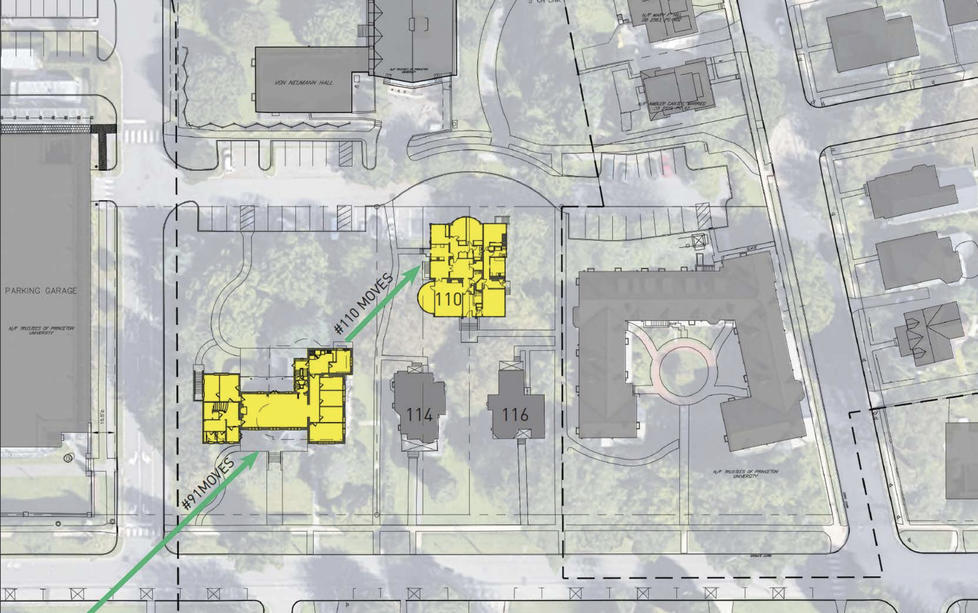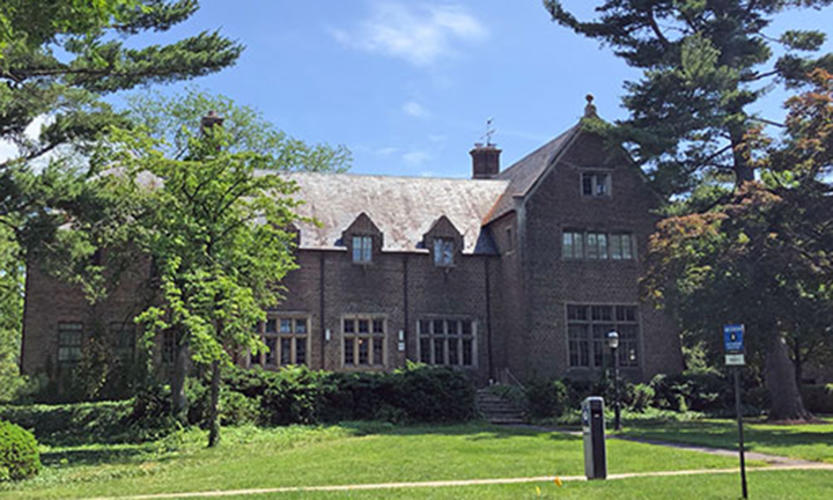University Compromises on Plan to Move Prospect Avenue Buildings
Plan for environmental studies and engineering complex moves forward
The University compromised on its plan to move 91 Prospect Ave. — the former Court Club — and Princeton’s municipal planning board unanimously approved the revised application Oct. 21, enabling the University to move ahead with a portion of the new Environmental Studies and School of Engineering and Applied Science complex.
Instead of demolishing three University-owned buildings on the north side of Prospect Avenue, the University will move the largest one, 110 Prospect, which includes five apartment units, to a space behind the other two, 114 and 116 Prospect, which will be rehabilitated and used for housing and offices. The University will move 91 Prospect to the lot where 110 Prospect currently stands.
The approval came more than four months after the first public meeting on the relocation of the former eating club, which houses the Office of the Dean for Research. Municipal planner Michael La Place, speaking about the compromise during the Oct. 21 meeting, called it a “win-win for town and gown.” University Architect Ron McCoy *80 said the process “involved a lot of goodwill, respect, careful listening, and constructive compromise from all parties involved.”
In addition to revising the site plan, the University committed to support the creation of a new local historic district, the Prospect Avenue Historic District, which also has the backing of the Graduate Interclub Council and the Princeton Prospect Foundation (PPF), a group devoted to the preservation of the eating club buildings.
Meetings about the University’s application for a zoning variance for the 91 Prospect move began in June. PPF joined with concerned residents to create the Save Prospect Coalition, which circulated a petition against the initial plan, eventually drawing more than 1,700 signatures. Sandy Harrison ’74, PPF’s board chair, said the overall benefit of the Environmental Studies and School of Engineering and Applied Science complex was never at issue, and if it weren’t for the concerns about historic preservation, “there wouldn’t have been a Save Prospect Coalition.”
Court Club was built in 1928, expanded in 1956, and remained an active club until 1964, according to Clifford W. Zink’s 2017 book, The Princeton Eating Clubs. Beginning in the late 1960s, the building served as part of Stevenson Hall, an alternative to the traditional eating clubs.
This story has been updated to include the University’s committment to rehabilitating 110, 114, and 116 Prospect.













No responses yet